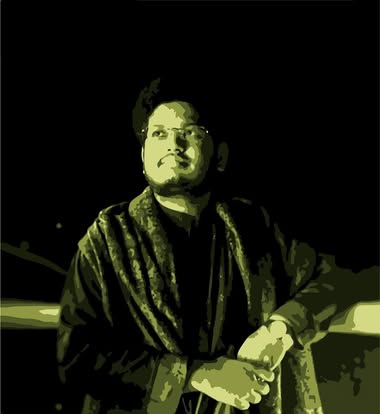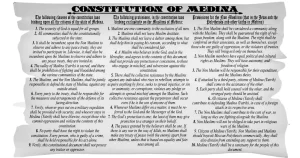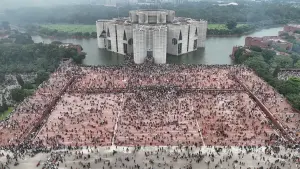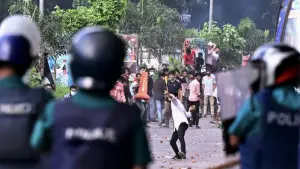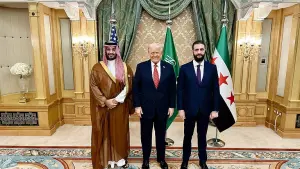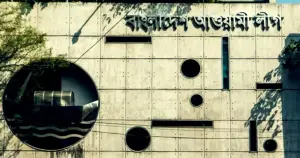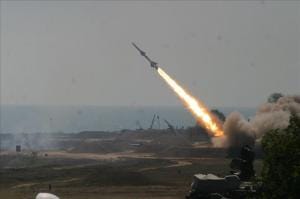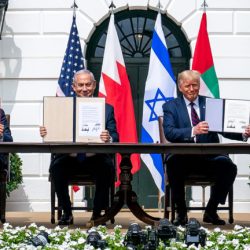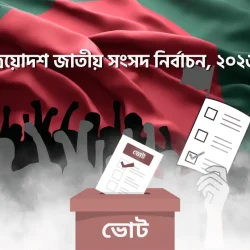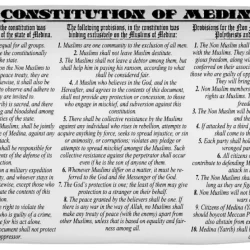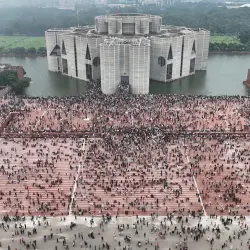Nelson Mandela was a South African anti-apartheid political activist who was imprisoned for more than 20 years due to his opposition to the apartheid state. He was eventually released in 1990. He is revered for uniting a country that had been split by apartheid and is known as the founder of a democratic South Africa. Nelson Mandela’s ambition to forgive and create a new “rainbow” nation has made him one of the most renowned political figures of the 20th and 21st centuries.
On July 18, 1918, Mandela was born into the Thembu royal family in Mvezo, Union of South Africa. He was the Tembu tribe’s local tribal chief’s son. Nelson participated in the events and initiation rituals of his neighborhood tribe when he was a child. At the University College of Fort Hare and the University of Witwatersrand, where he studied law, Mandela received his education. He admittedly struggled academically and dropped out of the institution in 1952 without receiving a degree. After his arrest in 1962, he only resumed his studies at the University of London, although he also didn’t finish that degree.
He graduated from the University of South Africa with an LLB in 1989, during the final months of his incarceration. At a ceremony in Cape Town, he received his diploma absentia.
Nelson Mandela’s Political Life
Nelson Mandela progressively became more aware of the racial injustice and unfairness that non-white people had to deal with throughout his time in college. Even though Mandela became more politically active starting in 1942, he didn’t officially join the African National Congress until 1944, when he was actively involved in the fight against apartheid and helped found the ANC Youth League (ANCYL).
Nelson Mandela was popular since he was one of the few qualified attorneys. His dedication to the cause also allowed him to advance through the ranks of the ANCYL, which helped the ANC adopt a more radical mass-based policy, the Program of Action, in 1949. He was initially prohibited at the end of 1952. He was only allowed to observe the Freedom Charter’s adoption at Kliptown on June 26, 1955, in secret as a restricted person.
Nelson Mandela was detained and accused of treason in 1956, along with a number of other ANC members. The defendants were finally exonerated in 1961 after a tortuous and drawn-out legal battle.
Mandela was once more detained and placed on trial for treason in 1963. This time, Mandela was found guilty by the State of conspiring to overthrow the government. Eight of the defendants, including Mandela, were given life sentences on June 12, 1964. He was held at the offshore Robben Island Prison from 1964 to 1982 and then moved to the nearby mainland Pollsmoor Prison. Thembi, Mandela’s oldest son, passed away in 1969. His mother passed away in 1968. He was prohibited from going to their funerals.
I have fought against white domination, and I have fought against black domination. I have cherished the ideal of a democratic and free society in which all persons live together in harmony and with equal opportunities. It is an ideal that I hope to live for and to achieve. But if needs be, it is an ideal for which I am prepared to die. ”
Nelson Mandela
However, the case attracted a lot of international attention, and the South African apartheid administration came under scrutiny. Nelson Mandela’s fame rapidly increased while he was incarcerated. As the anti-apartheid movement gained traction, he was widely acknowledged as the most influential black leader in South Africa and developed into a forceful symbol of resistance. Pressure for his release increased as he remained imprisoned.
Sanctions were imposed on South Africa’s apartheid regime by numerous nations. International pressure caused the apartheid authorities to start negotiating with the ANC and Nelson Mandela in particular starting in the middle of the 1980s. Mandela received numerous offers of conditional release. But he consistently refused to place his freedom ahead of the ANC’s political principles.
Release And President
On February 11, 1990, Nelson Mandela finally received his release. It was a historic day for both South Africa and the entire world. His release serves as a sign of apartheid’s approaching demise. After his release, there were drawn-out efforts to reach a permanent agreement. In the midst of frequent tribal conflict, the negotiations were stressful. However, South Africa held its first comprehensive and fair elections in April 1994. Nelson Mandela became the first President of the new South Africa after the ANC won 65 percent of the vote. The first democratic election in history took place on May 10, 1994.
Noam Chomsky: the most heated and unpleasant spokesperson of this Century
After serving one term as President, Mandela fulfilled his commitment and resigned in 1999. He created the Nelson Mandela Foundation and The Mandela Rhodes Foundation in addition to continuing to work with the Nelson Mandela Children’s Fund he started in 1995.
At a ceremony held at the Mvezo Great Place in April 2007, his grandson Mandla Mandela was appointed to lead the Mvezo Traditional Council.
Political Ideology
Mandela identified as a socialist as well as an African nationalist, an ideology he had maintained since joining the ANC. Instead of being an academic researcher or political thinker, he was a pragmatic politician. In the words of historian Tom Lodge, “For Mandela, politics has always been about telling stories, about creating narratives, about morally exemplary conduct, and only secondarily about ideological vision, more about means than ends.”
Mandela identifies as a “liberal decolonial humanism African nationalist.” Mandela adopted parts of his political theories from other intellectuals, including African nationalists like Nkrumah, African-American civil rights campaigners, and Indian independence fighters like Gandhi and Nehru, and applied them to the South African context. He also disapproved of other facets of their philosophy, such as the widespread anti-white prejudice among African nationalists. He did this by combining countercultural and hegemonic viewpoints, such as by using arguments from the then-dominant Afrikaner nationalism to advance his anti-apartheid agenda.
Read More: রক্তঝরা আগস্ট ও বঙ্গবন্ধু
His legal education and experience had a big impact on how he developed politically, especially his desire to bring about change through the “legal revolution” rather than by violence. He initially promoted nonviolence early in his life, subsequently accepted violence, and finally adopted a nonviolent strategy for negotiation and reconciliation. He always viewed violence as a realistic technique to bring his adversary to the bargaining table and only supported it when there was no other option. He was concerned about not starting a race war in South Africa and intended to target symbols of white supremacy and racist oppression rather than specific white people. Mandela differs from Gandhism, which some observers associate, in that he was willing to use violence. This willingness to use violence distinguishes Mandela from the ideology of Gandhism, with which some commentators have sought to associate him.
Nelson Mandela’s commitment to democracy, equality, and education never wavered. He never responded to racism with racism despite horrendous provocation. His life serves as an example for everyone who is oppressed and disadvantaged as well as everyone who opposes oppression and hardship. He worked to mend the past’s wounds as president. He was tortured, but he was gracious in his treatment of his old tormentors. His patient and forgiving nature won the esteem of the entire South African country and made the transition to complete democracy much easier.
If there are dreams of a beautiful South Africa, there are also roads that lead to their goal. Two of these roads could be named goodness and forgiveness.”
Nelson Mandela
Mandela And Palestine
In particular, Palestinians, who draw comparisons between the Israeli occupation and the apartheid wall – and the circumstances black South Africans endured – have praised the effort he led to abolish racial segregation and transform South Africa into a democratic state.
Mandela, who was 71 at the time, made it clear shortly after his release that he was determined to abolish apartheid in South Africa and establish a majority government and equal rights for all. During a town hall meeting in the US that was carried by the ABC channel, he was questioned about his relationship with the Palestine Liberation Organization (PLO), which at the time was still recognized as a terrorist organization by the US and Israel. He reiterated his support for the group. He declared, “We identify with the PLO because they are fighting for the right to self-determination just like we are.
Noam Chomsky: the most heated and unpleasant spokesperson of this Century
“We know too well that our freedom is incomplete without the freedom of the Palestinians,” Mandela said in a speech given in 1997 on the International Day of Solidarity with the Palestinian People. He declared his support for the two-state solution in 1999 but added that Israel must leave the occupied regions. “Select nonviolence above conflict. Except in situations where we are unable to access, move forward, or proceed. In that case, if there is no other option, we will employ violence.”
“We know too well that our freedom is incomplete without the freedom of the Palestinians.”
NELSON MANDELA
Mandela paid tribute to Yasser Arafat, whom he referred to as an “icon,” upon his passing in November 2004. “In the truest sense of the word, he was a symbol. He was not just concerned with the liberation of the Arab people but also of all oppressed people throughout the globe, including Arabs and non-Arabs. His passing is a huge loss for everyone involved in the fight against oppression “he declared.
Personal Life
Mandela, often known as Madiba, was largely regarded as a charismatic leader who “could not help magnetizing people.” He was very careful of his appearance and throughout his life, he always sought good clothing. Many observers thought he conducted himself in a regal manner.
He was brought up in the Methodist branch of Christianity, and the Methodist Church of Southern Africa asserts that he continued to be a member of their organization throughout his life. Mandela’s religious beliefs were “never solid,” nor did he ever have “a strong religious faith.”
Mandela frequently made references to manhood and was quite self-conscious about being a man. He was “easily enticed” by women, according to several biographers, who also noted that he had relationships with a variety of women since he was “by nature a romantic.” Mandela had 17 grandchildren as well as six children from his three marriages. Evelyn Ntoko Mase was his first spouse. Winnie Madikizela-Mandela was his second wife and the two parted ways following a contentious argument. Winnie was accused of taking part in violations of human rights. On the occasion of his 80th birthday, Mandela wed Graça Machel for a third time.
After a lingering illness, Nelson Mandela passed away on December 5, 2013, in Johannesburg, at the age of 95, with his family by his side.
Biographies And Popular Media
Book
- Nelson Mandela: The Man and the Movement
- Higher Than Hope: The Authorized Biography of Nelson Mandela
- Mandela: The Authorised Biography
- Nelson Mandela: A Biography
- Mandela: A Critical Life
